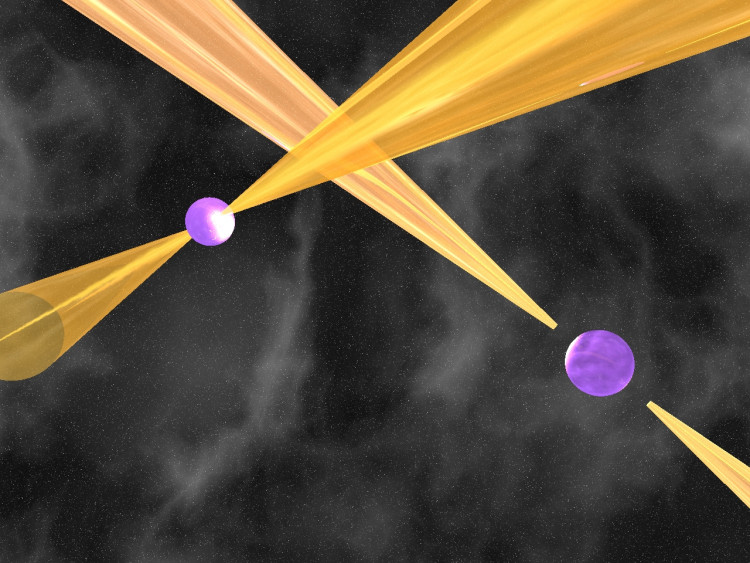Albert Einstein's famed general theory of relativity has passed its most demanding test to date. After 16 years of studying a pair of pulsars (highly compact neutron stars that emit radio waves from their poles), researchers discovered relativistic effects that could only be predicted by the theory.
"To our delight, we were able to test a cornerstone of Einstein's theory, the energy carried by gravitational waves, with a precision that is 25 times better than with the Nobel-Prize winning Hulse-Taylor pulsar, and 1,000 times better than currently possible with gravitational wave detectors," astrophysicist Michael Kramer from the Max Planck Institute for Radio Astronomy in Germany, who led the research, said.
The impact of gravity on space-time is described by general relativity. This means that general relativity predicts that light will be bent significantly around extremely massive bodies, such as neutron stars, as photons follow the distorted path of space-time.
Furthermore, as neutron stars accelerate, which can happen if two of them spiral around each other, they create gravitational waves - ripples in space-time - that cause their orbits to shrink as they lose energy. This is referred to as orbital decay.
The pulsar pair, known as PSR J07373039A/B, was discovered in 2003 and is situated roughly 2,400 light-years away. It presented a new opportunity for study: another test of relativity, in what the researchers dubbed an "unrivaled laboratory" for testing gravity theories.
The two pulsars are in close proximity, orbiting each other every 147 minutes. One rotates at a rate of 44 revolutions per second. The other is younger and more sluggish, turning once every 2.8 seconds. However, because these objects are so dense, their gravitational fields are extremely powerful, allowing them to influence the timing and angle of each other's pulses.
The radio pulses were regularly arriving later than expected, and the researchers determined that this was owing to them being deflected at an angle of 0.04 degrees due to the significant space-time curvature around the two stars. This is the first time such a high curvature has been observed experimentally.
They also discovered that the pulsars experienced orbital decay as a result of gravitational wave emission. They could detect the energy carried by these waves with 1000 times the precision of direct gravitational wave detectors on Earth, such as the LIGO detectors in the U.S.
As more powerful telescopes become available in the next years, we may expect to witness increasingly more precise tests of gravity under general relativity as scientists continue to hunt for flaws.
The research has been published in Physical Review X.





